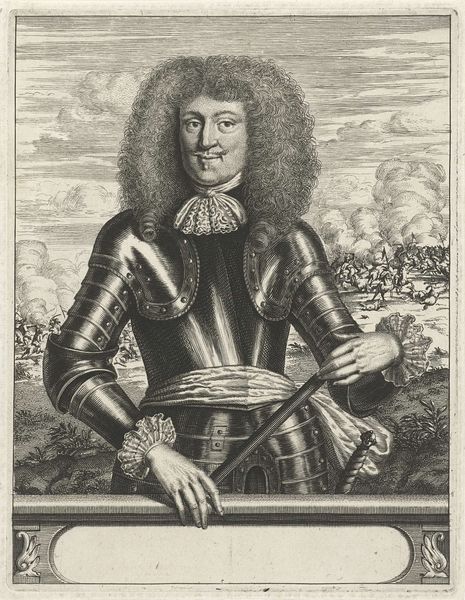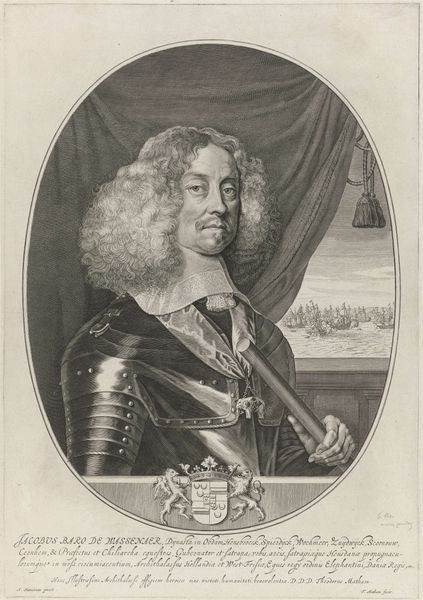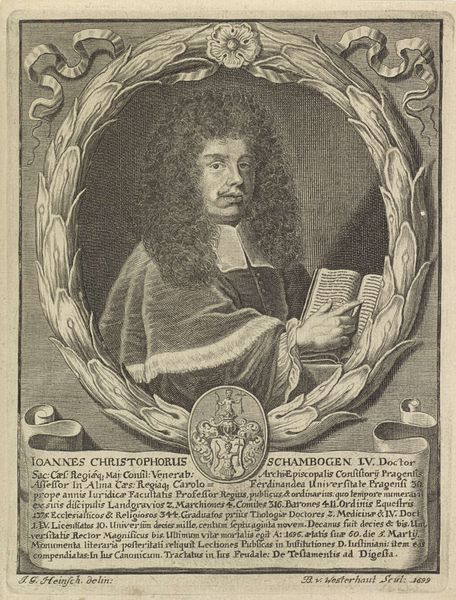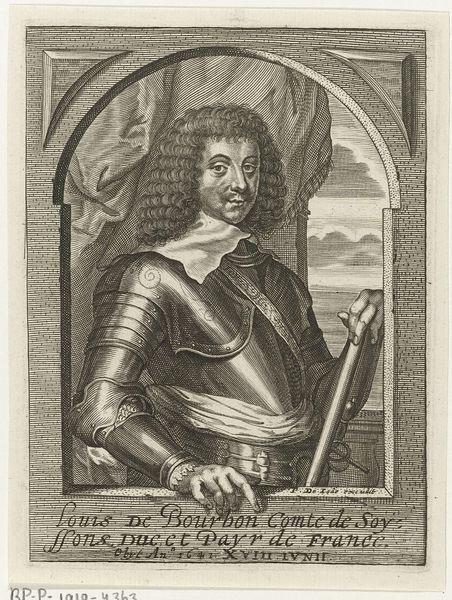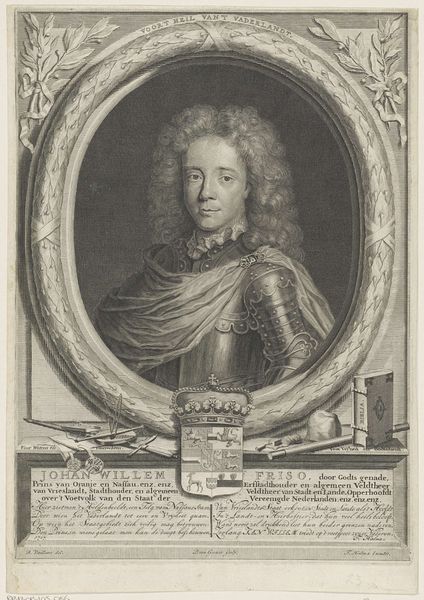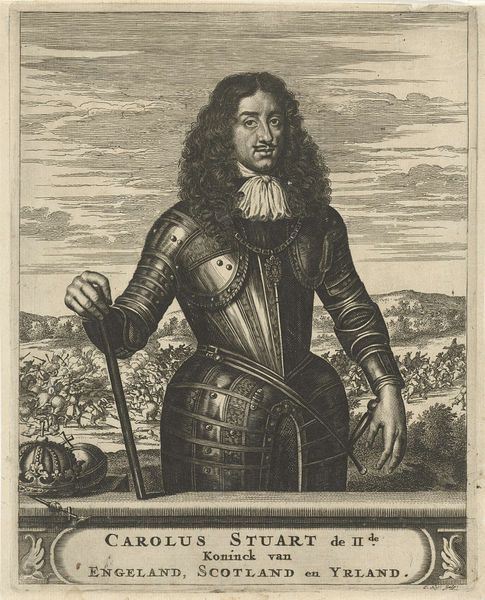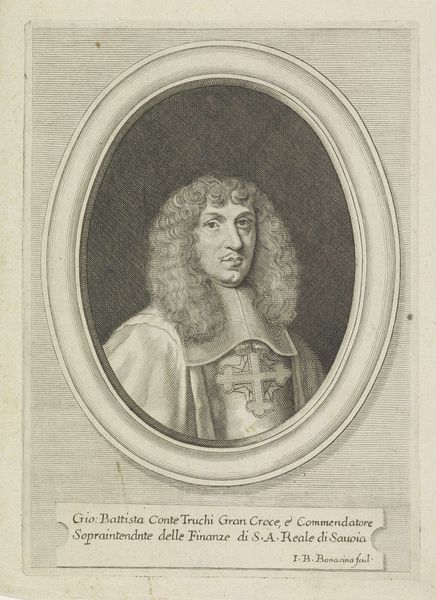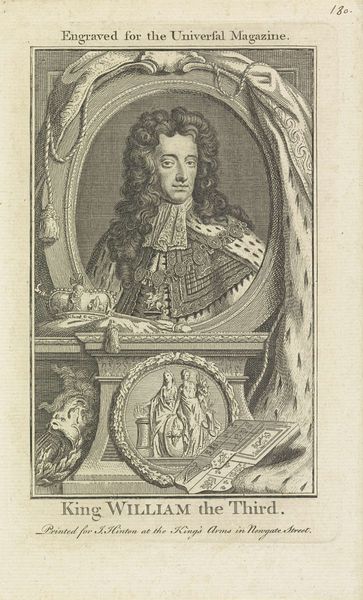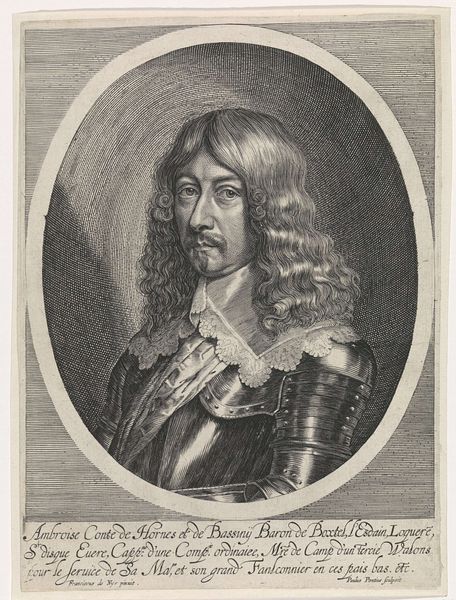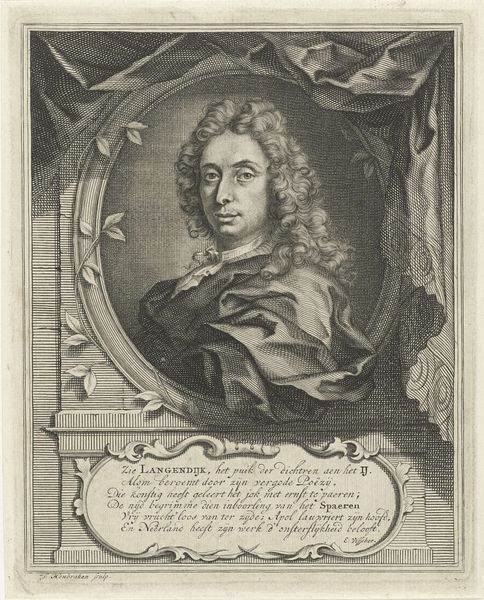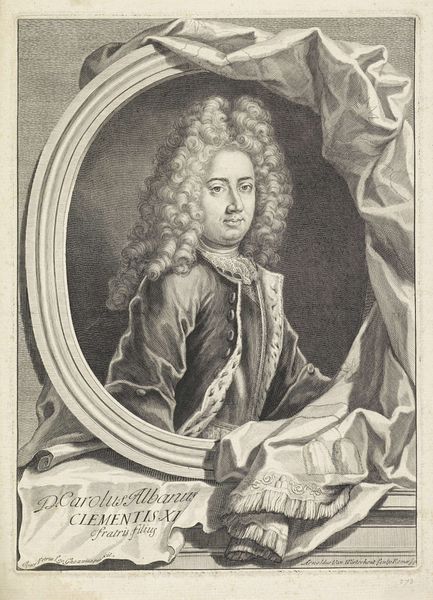
engraving
#
portrait
#
baroque
#
old engraving style
#
caricature
#
history-painting
#
engraving
Dimensions: width 201 mm, height 159 mm
Copyright: Rijks Museum: Open Domain
Editor: Here we have a Baroque engraving from the late 17th century, "Portret van Juan Domingo de Zuñiga y Fonseca." It seems so meticulous, you can even see what’s happening in the battle raging behind him. How do you approach interpreting a work like this? Curator: I see the engraving as an explicit artifact of labor. Look closely at the medium itself: each line meticulously etched, acid-bitten into the copper plate, before it’s even printed! What does the act of meticulously reproducing this image say about Zuñiga's power, and the power of print in disseminating that image? Consider the etcher; he toiled so the leader’s image could be mass-produced, for popular consumption. Editor: That makes sense, but it seems like an enormous effort. Why engraving specifically? Curator: Engraving, more than painting, leant itself to reproduction and distribution. A painting remained unique. But this? Political currency in the burgeoning theater of public opinion. How do we understand his status as Governor reflected by those mass-produced images, in terms of power, labor, and class? Editor: So, rather than just seeing a portrait, we should consider the political message it carries because it was reproduced so easily. Curator: Precisely. It asks us to contemplate the consumption of the leader’s persona. It's a material statement about image circulation and political force during a period of conflict. Editor: That's definitely given me a new perspective on portraiture and the Baroque period. Thanks so much. Curator: It was my pleasure. Remembering context helps so much in understanding and analyzing pieces like this.
Comments
No comments
Be the first to comment and join the conversation on the ultimate creative platform.
